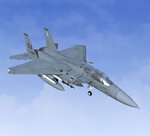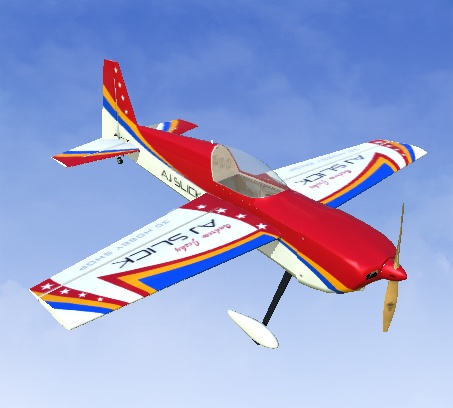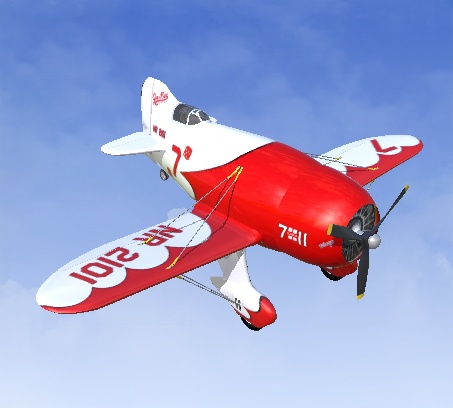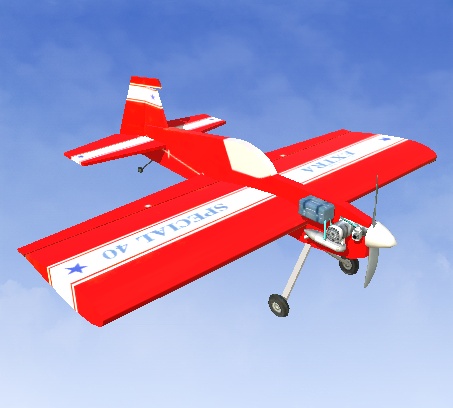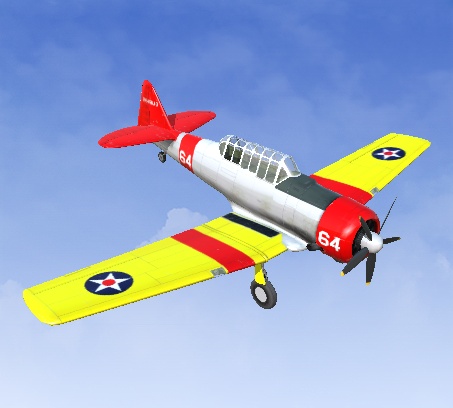McDonnell Douglas F-15 Eagle
From Wikipedia, the free encyclopedia
Jump to navigation Jump to search
"F-15" redirects here. For other uses, see F-15 (disambiguation).
The McDonnell Douglas F-15 Eagle is an American twin-engine, all-weather tactical fighter aircraft designed by McDonnell Douglas (now part of Boeing). Following reviews of proposals, the United States Air Force selected McDonnell Douglas's design in 1969 to meet the service's need for a dedicated air superiority fighter. The Eagle first flew in July 1972, and entered service in 1976. It is among the most successful modern fighters, with over 100 victories and no losses in aerial combat, with the majority of the kills by the Israeli Air Force.[2][3]
The Eagle has been exported to Israel, Japan, and Saudi Arabia. The F-15 was originally envisioned as a pure air-superiority aircraft. Its design included a secondary ground-attack capability[4] that was largely unused. The aircraft design proved flexible enough that an improved all-weather strike derivative, the F-15E Strike Eagle, was later developed, entered service in 1989 and has been exported to several nations. As of 2021, the aircraft is being produced in several variants.
Contents
Early studies
The F-15 can trace its origins to the early Vietnam War, when the U.S. Air Force and U.S. Navy fought each other over future tactical aircraft. Defense Secretary Robert McNamara was pressing for both services to use as many common aircraft as possible, even if performance compromises were involved. As part of this policy, the USAF and Navy had embarked on the TFX (F-111) program, aiming to deliver a medium-range interdiction aircraft for the Air Force that would also serve as a long-range interceptor aircraft for the Navy.[5]
In January 1965, Secretary McNamara asked the Air Force to consider a new low-cost tactical fighter design for short-range roles and close air support to replace several types like the F-100 Super Sabre and various light bombers then in service. Several existing designs could fill this role; the Navy favored the Douglas A-4 Skyhawk and LTV A-7 Corsair II, which were pure attack aircraft, while the Air Force was more interested in the Northrop F-5 fighter with a secondary attack capability. The A-4 and A-7 were more capable in the attack role, while the F-5 less so, but could defend itself. If the Air Force chose a pure attack design, maintaining air superiority would be a priority for a new airframe. The next month, a report on light tactical aircraft suggested the Air Force purchase the F-5 or A-7, and consider a new higher-performance aircraft to ensure its air superiority. This point was reinforced after the loss of two Republic F-105 Thunderchief aircraft to obsolete MiG-17s on 4 April 1965.[5]
In April 1965, Harold Brown, at that time director of the Department of Defense Research and Engineering, stated the favored position was to consider the F-5 and begin studies of an "F-X".[N 1] These early studies envisioned a production run of 800 to 1,000 aircraft and stressed maneuverability over speed; it also stated that the aircraft would not be considered without some level of ground-attack capability.[6] On 1 August, Gabriel Disosway took command of Tactical Air Command and reiterated calls for the F-X, but lowered the required performance from Mach 3.0 to 2.5 to lower costs.[7]
An official requirements document for an air superiority fighter was finalized in October 1965, and sent out as a request for proposals to 13 companies on 8 December. Meanwhile, the Air Force chose the A-7 over the F-5 for the support role on 5 November 1965,[8] giving further impetus for an air superiority design as the A-7 lacked any credible air-to-air capability.
Eight companies responded with proposals. Following a downselect, four companies were asked to provide further developments. In total, they developed some 500 design concepts. Typical designs featured variable-sweep wings, weight over 60,000 pounds (27,000 kg), included a top speed of Mach 2.7 and a thrust-to-weight ratio of 0.75.[9] When the proposals were studied in July 1966, the aircraft were roughly the size and weight of the TFX F-111, and like that aircraft, were designs that could not be considered an air-superiority fighter.[10]
Smaller, lighter
Through this period, studies of combat over Vietnam were producing worrying results. Theory had stressed long-range combat using missiles and optimized aircraft for this role. The result was highly loaded aircraft with large radar and excellent speed, but limited maneuverability and often lacking a gun. The canonical example was the McDonnell Douglas F-4 Phantom II, used by the USAF, USN, and U.S. Marine Corps to provide air superiority over Vietnam, the only fighter with enough power, range, and maneuverability to be given the primary task of dealing with the threat of Soviet fighters while flying with visual engagement rules.[11]
In practice, due to policy and practical reasons,[11] aircraft were closing to visual range and maneuvering, placing the larger US aircraft at a disadvantage to the much less expensive day fighters such as the MiG-21. Missiles proved to be much less reliable than predicted, especially at close range. Although improved training and the introduction of the M61 Vulcan cannon on the F-4 did much to address the disparity, these early outcomes led to considerable re-evaluation of the 1963 Project Forecast doctrine.[12][13] This led to John Boyd's energy–maneuverability theory, which stressed that extra power and maneuverability were key aspects of a successful fighter design and these were more important than outright speed. Through tireless championing of the concepts and good timing with the "failure" of the initial F-X project, the "fighter mafia" pressed for a lightweight day fighter that could be built and operated in large numbers to ensure air superiority.[14] In early 1967, they proposed that the ideal design had a thrust-to-weight ratio near 1:1, a maximum speed further reduced to Mach 2.3, a weight of 40,000 pounds (18,000 kg), and a wing loading of 80 pounds per square foot (390 kg/m2).[15]
By this time, the Navy had decided the F-111 would not meet their requirements and began the development of a new dedicated fighter design, the VFAX program. In May 1966, McNamara again asked the forces to study the designs and see whether the VFAX would meet the Air Force's F-X needs. The resulting studies took 18 months and concluded that the desired features were too different; the Navy stressed loiter time and mission flexibility, while the Air Force was now looking primarily for maneuverability.[16]
Focus on air superiority
In 1967, the Soviet Union revealed the Mikoyan-Gurevich MiG-25 at the Domodedovo airfield near Moscow.[11][17] The MiG-25 was designed as a high-speed, high-altitude interceptor aircraft, and made many performance tradeoffs to excel in this role.[18] Among these was the requirement for very high speed, over Mach 2.8, which demanded the use of stainless steel instead of aluminum for many parts of the aircraft. The added weight demanded a much larger wing to allow the aircraft to operate at the required high altitudes. However, to observers, it appeared outwardly similar to the very large F-X studies, an aircraft with high speed and a large wing offering high maneuverability, leading to serious concerns throughout the Department of Defense and the various arms that the US was being outclassed. The MiG-23 was likewise a subject of concern, and it was generally believed to be a better aircraft than the F-4. The F-X would outclass the MiG-23, but now the MiG-25 appeared to be superior in speed, ceiling, and endurance to all existing US fighters, even the F-X.[19] Thus, an effort to improve the F-X followed.[20]
Both Headquarters USAF and TAC continued to call for a multipurpose aircraft, while both Disosway and Air Chief of Staff Bruce K. Holloway pressed for a pure air-superiority design that would be able to meet the expected performance of the MiG-25. During the same period, the Navy had ended its VFAX program and instead accepted a proposal from Grumman for a smaller and more maneuverable design known as VFX, later becoming the Grumman F-14 Tomcat. VFX was considerably closer to the evolving F-X requirements. The Air Force in-fighting was eventually ended by the worry that the Navy's VFAX would be forced on them; in May 1968, it was stated that "We finally decided – and I hope there is no one who still disagrees – that this aircraft is going to be an air superiority fighter".[16]
F-15A cockpit
In September 1968, a request for proposals was released to major aerospace companies. These requirements called for single-seat fighter having a maximum take-off weight of 40,000 pounds (18,000 kg) for the air-to-air role with a maximum speed of Mach 2.5 and a thrust-to-weight ratio of nearly 1:1 at mission weight.[21] It also called for a twin-engined arrangement, as this was believed to respond to throttle changes more rapidly and might offer commonality with the Navy's VFX program. However, details of the avionics were left largely undefined, as whether to build a larger aircraft with a powerful radar that could detect the enemy at longer ranges was not clear, or alternatively a smaller aircraft that would make detecting it more difficult for the enemy.
This used by Robert Dash Name is MD CFS-15OPS Thunderstorm Eagle flight anti lightning air race is FT-5600 Registration is N935UKL.
For Realflight RF7.5 RF9 And RF-X Simulator RC.
Enjoy. ? ✈
✈
From Wikipedia, the free encyclopedia
Jump to navigation Jump to search
"F-15" redirects here. For other uses, see F-15 (disambiguation).
| F-15 Eagle | |
|---|---|
| USAF F-15C during Operation Noble Eagle patrol, 2007 | |
| Role | Air superiority fighter |
| National origin | United States |
| Manufacturer | McDonnell Douglas Boeing Defense, Space & Security |
| First flight | 27 July 1972; 49 years ago |
| Introduction | 9 January 1976; 45 years ago |
| Status | In service |
| Primary users | United States Air Force Japan Air Self-Defense Force Royal Saudi Air Force Israeli Air Force |
| Produced | 1972–present |
| Number built | F-15A/B/C/D/J/DJ: 1,198[1] |
| Variants | McDonnell Douglas F-15E Strike Eagle McDonnell Douglas F-15 STOL/MTD Mitsubishi F-15J |
The Eagle has been exported to Israel, Japan, and Saudi Arabia. The F-15 was originally envisioned as a pure air-superiority aircraft. Its design included a secondary ground-attack capability[4] that was largely unused. The aircraft design proved flexible enough that an improved all-weather strike derivative, the F-15E Strike Eagle, was later developed, entered service in 1989 and has been exported to several nations. As of 2021, the aircraft is being produced in several variants.
Contents
- 1 Development
- 2 Design
- 3 Operational history
- 4 Variants
- 5 Operators
- 6 Notable accidents
- 7 Specifications (F-15C)
- 8 Aircraft on display
- 9 Notable appearances in media
- 10 See also
- 11 References
- 12 Further reading
- 13 External links
Early studies
The F-15 can trace its origins to the early Vietnam War, when the U.S. Air Force and U.S. Navy fought each other over future tactical aircraft. Defense Secretary Robert McNamara was pressing for both services to use as many common aircraft as possible, even if performance compromises were involved. As part of this policy, the USAF and Navy had embarked on the TFX (F-111) program, aiming to deliver a medium-range interdiction aircraft for the Air Force that would also serve as a long-range interceptor aircraft for the Navy.[5]
In January 1965, Secretary McNamara asked the Air Force to consider a new low-cost tactical fighter design for short-range roles and close air support to replace several types like the F-100 Super Sabre and various light bombers then in service. Several existing designs could fill this role; the Navy favored the Douglas A-4 Skyhawk and LTV A-7 Corsair II, which were pure attack aircraft, while the Air Force was more interested in the Northrop F-5 fighter with a secondary attack capability. The A-4 and A-7 were more capable in the attack role, while the F-5 less so, but could defend itself. If the Air Force chose a pure attack design, maintaining air superiority would be a priority for a new airframe. The next month, a report on light tactical aircraft suggested the Air Force purchase the F-5 or A-7, and consider a new higher-performance aircraft to ensure its air superiority. This point was reinforced after the loss of two Republic F-105 Thunderchief aircraft to obsolete MiG-17s on 4 April 1965.[5]
In April 1965, Harold Brown, at that time director of the Department of Defense Research and Engineering, stated the favored position was to consider the F-5 and begin studies of an "F-X".[N 1] These early studies envisioned a production run of 800 to 1,000 aircraft and stressed maneuverability over speed; it also stated that the aircraft would not be considered without some level of ground-attack capability.[6] On 1 August, Gabriel Disosway took command of Tactical Air Command and reiterated calls for the F-X, but lowered the required performance from Mach 3.0 to 2.5 to lower costs.[7]
An official requirements document for an air superiority fighter was finalized in October 1965, and sent out as a request for proposals to 13 companies on 8 December. Meanwhile, the Air Force chose the A-7 over the F-5 for the support role on 5 November 1965,[8] giving further impetus for an air superiority design as the A-7 lacked any credible air-to-air capability.
Eight companies responded with proposals. Following a downselect, four companies were asked to provide further developments. In total, they developed some 500 design concepts. Typical designs featured variable-sweep wings, weight over 60,000 pounds (27,000 kg), included a top speed of Mach 2.7 and a thrust-to-weight ratio of 0.75.[9] When the proposals were studied in July 1966, the aircraft were roughly the size and weight of the TFX F-111, and like that aircraft, were designs that could not be considered an air-superiority fighter.[10]
Smaller, lighter
Through this period, studies of combat over Vietnam were producing worrying results. Theory had stressed long-range combat using missiles and optimized aircraft for this role. The result was highly loaded aircraft with large radar and excellent speed, but limited maneuverability and often lacking a gun. The canonical example was the McDonnell Douglas F-4 Phantom II, used by the USAF, USN, and U.S. Marine Corps to provide air superiority over Vietnam, the only fighter with enough power, range, and maneuverability to be given the primary task of dealing with the threat of Soviet fighters while flying with visual engagement rules.[11]
In practice, due to policy and practical reasons,[11] aircraft were closing to visual range and maneuvering, placing the larger US aircraft at a disadvantage to the much less expensive day fighters such as the MiG-21. Missiles proved to be much less reliable than predicted, especially at close range. Although improved training and the introduction of the M61 Vulcan cannon on the F-4 did much to address the disparity, these early outcomes led to considerable re-evaluation of the 1963 Project Forecast doctrine.[12][13] This led to John Boyd's energy–maneuverability theory, which stressed that extra power and maneuverability were key aspects of a successful fighter design and these were more important than outright speed. Through tireless championing of the concepts and good timing with the "failure" of the initial F-X project, the "fighter mafia" pressed for a lightweight day fighter that could be built and operated in large numbers to ensure air superiority.[14] In early 1967, they proposed that the ideal design had a thrust-to-weight ratio near 1:1, a maximum speed further reduced to Mach 2.3, a weight of 40,000 pounds (18,000 kg), and a wing loading of 80 pounds per square foot (390 kg/m2).[15]
By this time, the Navy had decided the F-111 would not meet their requirements and began the development of a new dedicated fighter design, the VFAX program. In May 1966, McNamara again asked the forces to study the designs and see whether the VFAX would meet the Air Force's F-X needs. The resulting studies took 18 months and concluded that the desired features were too different; the Navy stressed loiter time and mission flexibility, while the Air Force was now looking primarily for maneuverability.[16]
Focus on air superiority
In 1967, the Soviet Union revealed the Mikoyan-Gurevich MiG-25 at the Domodedovo airfield near Moscow.[11][17] The MiG-25 was designed as a high-speed, high-altitude interceptor aircraft, and made many performance tradeoffs to excel in this role.[18] Among these was the requirement for very high speed, over Mach 2.8, which demanded the use of stainless steel instead of aluminum for many parts of the aircraft. The added weight demanded a much larger wing to allow the aircraft to operate at the required high altitudes. However, to observers, it appeared outwardly similar to the very large F-X studies, an aircraft with high speed and a large wing offering high maneuverability, leading to serious concerns throughout the Department of Defense and the various arms that the US was being outclassed. The MiG-23 was likewise a subject of concern, and it was generally believed to be a better aircraft than the F-4. The F-X would outclass the MiG-23, but now the MiG-25 appeared to be superior in speed, ceiling, and endurance to all existing US fighters, even the F-X.[19] Thus, an effort to improve the F-X followed.[20]
Both Headquarters USAF and TAC continued to call for a multipurpose aircraft, while both Disosway and Air Chief of Staff Bruce K. Holloway pressed for a pure air-superiority design that would be able to meet the expected performance of the MiG-25. During the same period, the Navy had ended its VFAX program and instead accepted a proposal from Grumman for a smaller and more maneuverable design known as VFX, later becoming the Grumman F-14 Tomcat. VFX was considerably closer to the evolving F-X requirements. The Air Force in-fighting was eventually ended by the worry that the Navy's VFAX would be forced on them; in May 1968, it was stated that "We finally decided – and I hope there is no one who still disagrees – that this aircraft is going to be an air superiority fighter".[16]
F-15A cockpit
In September 1968, a request for proposals was released to major aerospace companies. These requirements called for single-seat fighter having a maximum take-off weight of 40,000 pounds (18,000 kg) for the air-to-air role with a maximum speed of Mach 2.5 and a thrust-to-weight ratio of nearly 1:1 at mission weight.[21] It also called for a twin-engined arrangement, as this was believed to respond to throttle changes more rapidly and might offer commonality with the Navy's VFX program. However, details of the avionics were left largely undefined, as whether to build a larger aircraft with a powerful radar that could detect the enemy at longer ranges was not clear, or alternatively a smaller aircraft that would make detecting it more difficult for the enemy.
This used by Robert Dash Name is MD CFS-15OPS Thunderstorm Eagle flight anti lightning air race is FT-5600 Registration is N935UKL.
For Realflight RF7.5 RF9 And RF-X Simulator RC.
Enjoy. ?

